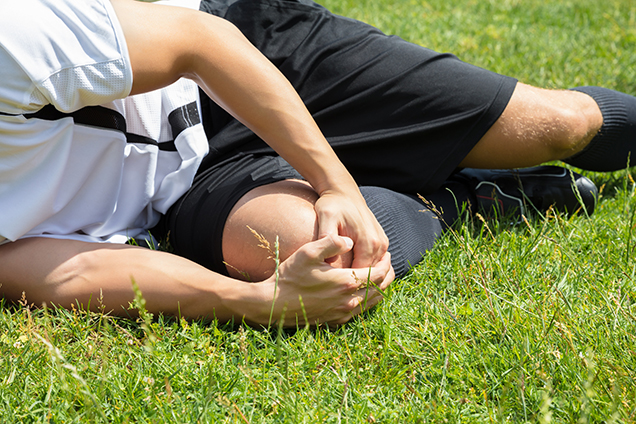09 Aug Early treatment of injuries key to keeping young athletes in the game

“Shaking it off” and “toughing it out” are all too synonymous with sports injuries. While sprains and breaks are nothing new for athletes, teens are especially likely to push through the pain for fear of missed practices, games and scholarships. “The fall sports season often brings to light injuries that have plagued athletes all summer long,” said Jay Moore, ATC/L, director of Williamson Medical Center’s Athletic Training Program.
DISPELLING MYTHS
“There’s a misconception that athletic trainers are eager to take kids off the field, but we’re really there to get ahead of the injury, so they can get back on the field as quickly as possible,” Moore said. Allowing injuries to snowball only increases the risk of long-term damage that can follow athletes well into adulthood. Athletic trainers work hand-in-hand with parents, coaches, physicians and physical therapists to provide early intervention. “Athletes who address their pain early on are going to recover much more quickly,” Moore said. “If you have a lingering injury, it’s better to go ahead and talk to your athletic trainer and see what it is. It doesn’t mean you will have to come out of the game, but we want to address injuries early. We want to get athletes back to 100 percent as opposed to pushing through an injury all season and risk having it follow them into their next phase of life.”
TYPES OF INJURIES
Students typically sustain two types of injuries while playing sports: acute and overuse. Acute injuries usually result from a single traumatic event and may include wrist fracture, ankle sprain or a shoulder dislocation. Overuse injuries are more difficult to diagnose and treat because they are usually subtle and occur over time. When repetitive trauma affects the tendons, bones and joints, an overuse injury develops. Common examples include tennis elbow, swimmer’s shoulder, Achilles tendinitis and stress fractures. Heat injuries are another major concern for athletic trainers, especially during summer training camps. Painful muscle cramps are an early symptom of dehydration, and athletes who don’t receive body cooling and fluid replacement are likely to progress to a heat related illness. The first symptoms of heat illness should be immediately reported to medical staff. A common injury in contact sports like football, a concussion is a traumatic injury to the brain that alters mental status or causes other symptoms. Many people assume they do not have a concussion if they have not lost consciousness, but significant injury can occur without losing consciousness at all. Symptoms include balance problems, difficulty communicating or concentrating, dizziness, drowsiness, fatigue, feeling emotional or mentally foggy, nausea, numbness or tingling, sensitivity to light or noise, or unusual sleep changes.
AHEAD OF THE GAME
Moore said following some simple steps can help keep athletes safer on and off the field. Drinking plenty of water throughout the day and eating well balanced meals can make a big difference in performance, while getting ample sleep can promote healing. Ice down minor aches and pains, and begin rehab as soon as possible after a serious injury. Parents can also watch for common signs of injury: A child appearing to be in pain when using a particular body part, inability to sleep, shortness of breath or trouble breathing during activity, headaches during or after activity, appearing to experience stiffness in the joints or muscles, dizziness or lightheadedness, difficulty sitting or climbing stairs, or unusual weakness. “You want to get ahead of the game in taking care of your body, especially at the start of the season,” Moore said. “Our job is to take care of athletes, and their health and safety are foremost to us.”
ABOUT JAY MOORE:
Jay Moore, ATC/L, is the director of Williamson Medical Center’s Athletic Training Program. Through a partnership with orthopaedic surgeons at the Bone and Joint Institute of Tennessee, Williamson Medical Center’s program provides athletic trainers and medical personnel for all TSSAA-sanctioned practices and games at Williamson County Schools.
